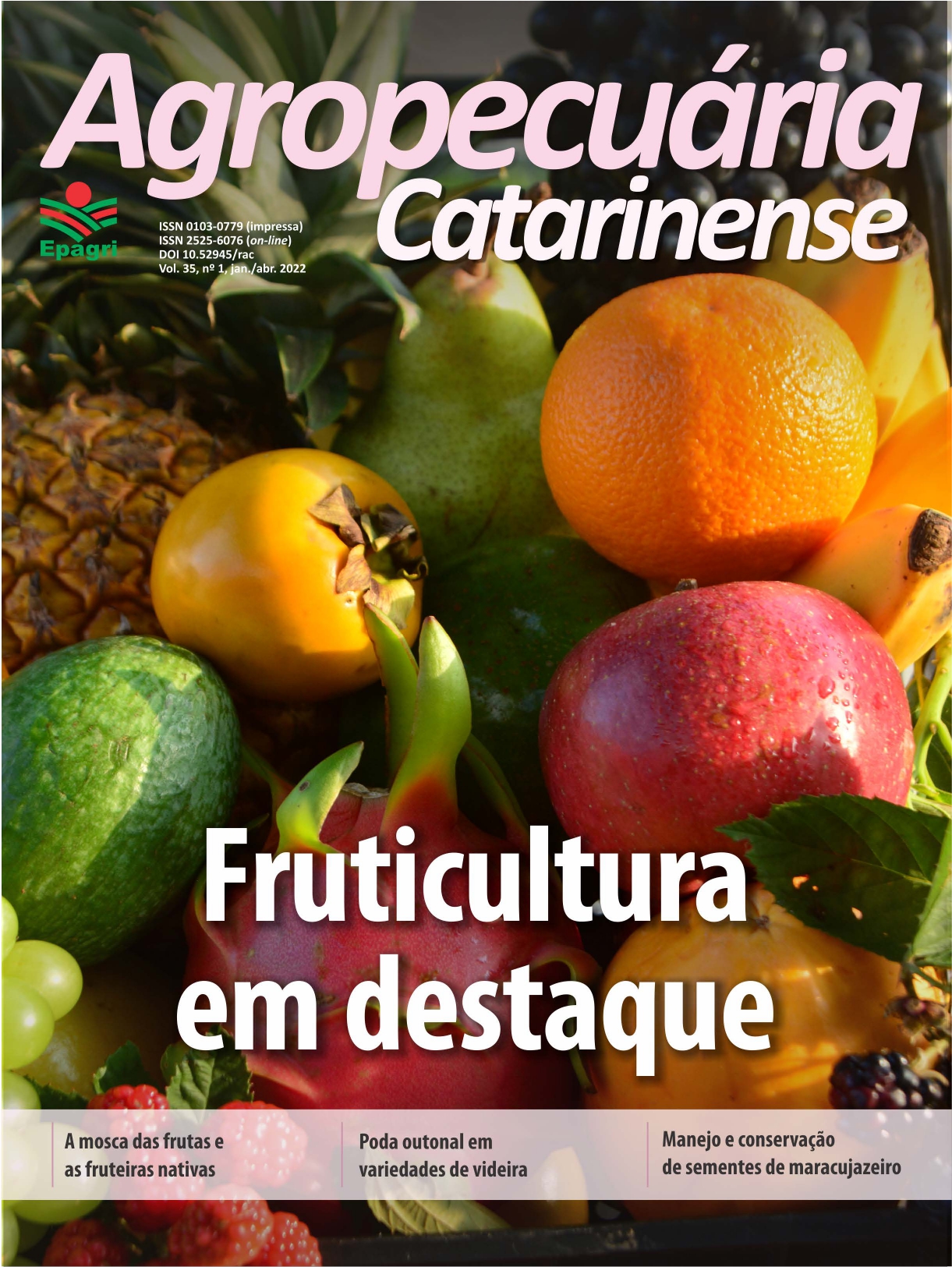Capturing micro-vibration images in plants caused by homeopathic application
DOI:
https://doi.org/10.52945/rac.v35i1.1226Keywords:
agrohomeopathy, vibraimage, electric tension, computational visionAbstract
The use of images, sensors and mathematical algorithms can help in the generation of technical attributes and facilitate the plant health diagnosis. Combined with this, computer vision provides a non-destructive and non-invasive strategy for collecting samples and analyzing plant propagules, provided the experiment traceability. Thus, the objective of this research was to identify signs of homeopathies of Magnetitum and Arsenicum tartaricum applied in purslane [Pilea microphylla (L.) Liebm.], using computational algorithms. The work of images capturing was carried out in the Laboratory of Plant Production and Didactic Garden of the Agronomy Course, UNISUL University. To evaluate signs in plants, based on the images, algorithms found in VibaHT® and ImageJ were used. The images were generated by webcam (online) and two homeopathies at 250 milesimal were applied for 14 days. The experimental procedure consisted of generating “640 × 480” pixel images from a transformed webcam to simulate a "red-green-NIR" (RGN) sensor, replacing the channel with a blue light filter and thus produce a near-infrared image (NIR). The images were also generated in their normal "red-green-blue" (RGB) channels to test the algorithms' competence. After capturing the images, mathematical analyzes of the pixel’s variation were performed, represented by three variables, developed by specific algorithms: lacunarity, entropy and stress. The number of experimental repetitions was sufficient to identify significant differences at the 1% probability level between the images, and the algorithms were robust to identify the signs of homeopathy.
Metrics
Publication Facts
Reviewer profiles N/A
Author statements
- Academic society
- Epagri - Revista Agropecuária Catarinense
- Publisher
- Empresa de Pesquisa Agropecuária e Extensão Rural de Santa Catarina - Epagri
References
AKIMOV, V.A.; MINKIN, V.A. Determination of Significant Behavioral Parameters on COVID-19 Diagnosis by Artificial Neural Networks Modeling. In: International Open Science Conference VIBRA2021, 4th, Modern Psychology. The Vibraimage Technology. Preprint[…] June 2021, St. Petersburg, Russia. DOI: https://doi.org/ 10.25696/ELSYS.VC4.EN.06
CHOUHAN, S.S.; SINGH, U.P.; SHARMA, U.; JAIN, S. Leaf disease segmentation and classification of Jatropha curcas L. and Pongamia pinnata L. biofuel plants using computer vision-based approaches. Measurement, v.171, 2021. https://doi.org/10.1016/j.measurement.2020.108796.
CONCEIÇÃO, W.S.; MATOS, R.S.; BUFALINO, L.; RAMOS, G.Q.; ZAYAS, F.G.; FONSERCA FILHO, H.D. da. Micromorphology and fractal evaluation of Dinizia excelsa Ducke wood under three different cut conditions by atomic force microscopy. Measurement, v.179, 2021, 109490. DOI: https://doi.org/ 10.1016/j.measurement.2021.109490
MINKIN, V.A.; NIKOLAENKO, N.N. Application of Vibraimage Technology and System for Analysis of Motor Activity and Study of Functional State of the Human Body. Biomedical Engineering, v.42, n.4, p.196-200, 2008. DOI: https://doi.org/10.1007/s10527-008-9045-9.
MISHRA, P.; LOHUMI, S.; KHAN, H.A.; NORDON, A. Close-range hyperspectral imaging of whole plants for digital phenotyping: Recent applications and illumination correction approaches. Computers and Electronics in Agriculture, v.178, 2020. DOI: 10.1016/j.compag.2020.105780.
PATRICIO, D.I.; RIEDER, R. Computer vision and artificial intelligence in precision agriculture for grain crops: A systematic review. Computers and Electronics in Agriculture, v.153, p. 69-81, 2018. DOI: https://doi.org/10.1016/j.compag.2018.08.001.
ZANCO, J. J; BOFF, P; MINKIN, V. A. Análise de sinais bioeletrográficos em sementes de feijão-branco tratadas com altas diluições. 2013. Disponível em: https://www.vibraimage.it/Bibliography/Engl/2013/resumo_expandido_2013.pdf
ZANCO, J.J.; BOFF, P.; WERNER, S.S.; BOFF, M.I.C. Biophototic in azuki bean seeds treated with ultrahigh dilutions. Research, Society and Development, v.10, n.2, pág. e26110212462, 2021. DOI: https://doi.org/10.33448/rsd-v10i2.12462.
Downloads
Published
How to Cite
Issue
Section
License
Copyright (c) 2022 JASPER JOSE ZANCO, Pedro Boff, Sérgio Domingues, Mari Ines Carissimi Boff

This work is licensed under a Creative Commons Attribution 4.0 International License.





